From the dark forest we see glowing eyes peering out at us. Mere meters away, our lights reveal a massive black beast through the trees. As it slowly turns to face us, we see its enormous curved horns.
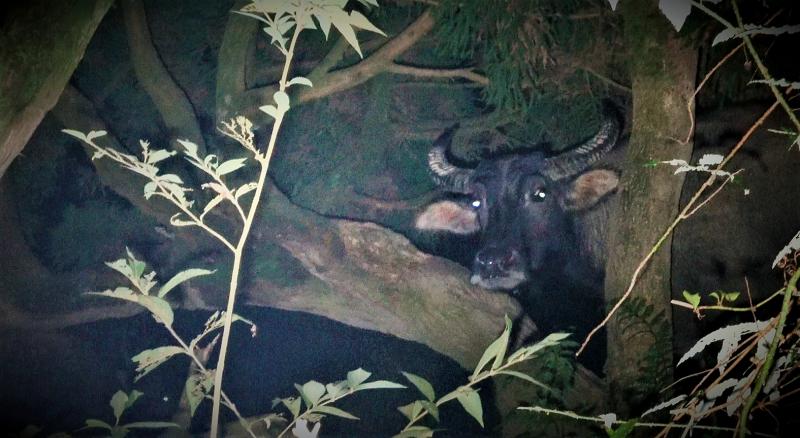
Photo: James Osborne
These are creatures we had hoped to see on this stage of the hike, but not not so close. We quickly and cautiously move a safer distance down the trail, hoping they will not charge at us — as they’ve done with other hikers, most recently killing one in January.
Throughout the night, owls hoot and fly over-head, while flying squirrels clamber around in the trees. A highly venomous many-banded krait scurries across the path in front of us. It is no wonder so many spooky tales are set in forests at night.
The third section of the 92km Taipei Grand Trail (台北大縱走) is proving to be just as thrilling as we could hope, but we are in for a long night.
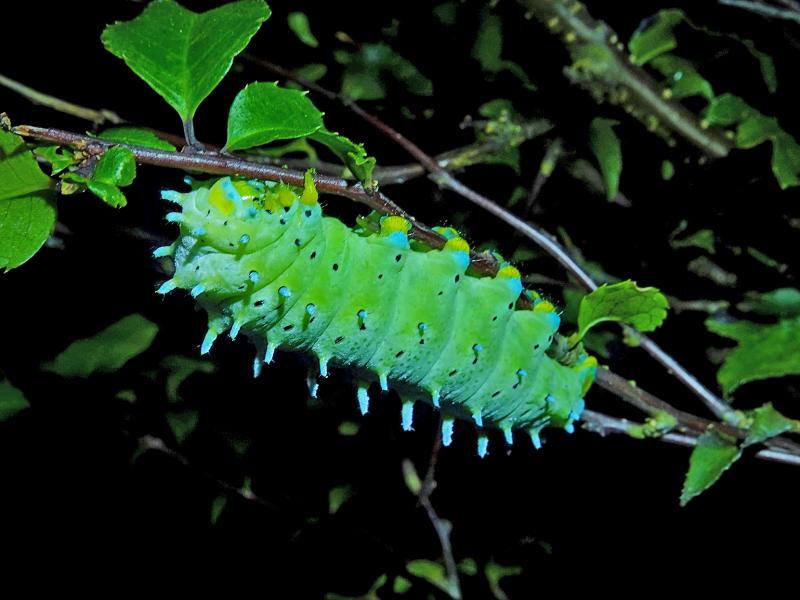
Photo: James Osborne
STAGE THREE
Having spent the whole afternoon navigating a logistical nightmare of taxis and buses, and getting our vehicles parked at the end of the trail, we arrive right before dusk at the iconic fumaroles at Xiaoyoukeng (小油坑). Great plumes of steam rise up from cracks in the dormant volcano, filling the air with the smell of rotten eggs.
From here we begin our steep ascent up to Qixingshan (七星山). Our eyes are set toward the Qingtiangang Grasslands (擎天崗大草原), then on all the way back down to our motorbikes at Fengguizui (風櫃嘴). At about 14km in length, tonight’s stage of the Taipei Grand Hike is the longest.
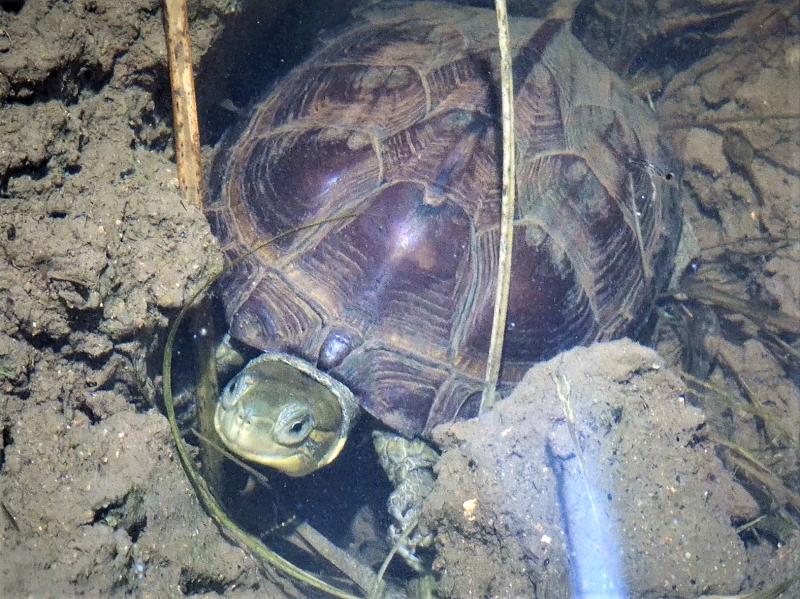
Photo: James Osborne
Soon the Mid Autumn Festival full moon fills the night sky, making the silvergrass flowers glint in the moonlight as they tower high on either side of the trail. With a smaller team of only four, we quickly but carefully climb the stone staircase to meet our fifth member, an entomology student named Janus, at the summit. He had gone ahead on a futile mission to film the sunset, on what became a cloudy evening.
The city lights of Taipei illuminate the darkness far below. Having convened with our final team member at the peak, he points out an iridescent ground beetle running in circles. We get a quick selfie at the summit marker while trying not to bother the dozens of moon gazers, then begin our descent back toward the forest.
We soon encounter our usual forest friends; Japalura lizards asleep in the branches, a giant stick insect crawling on a fern and a green tree viper lurking among the foliage.
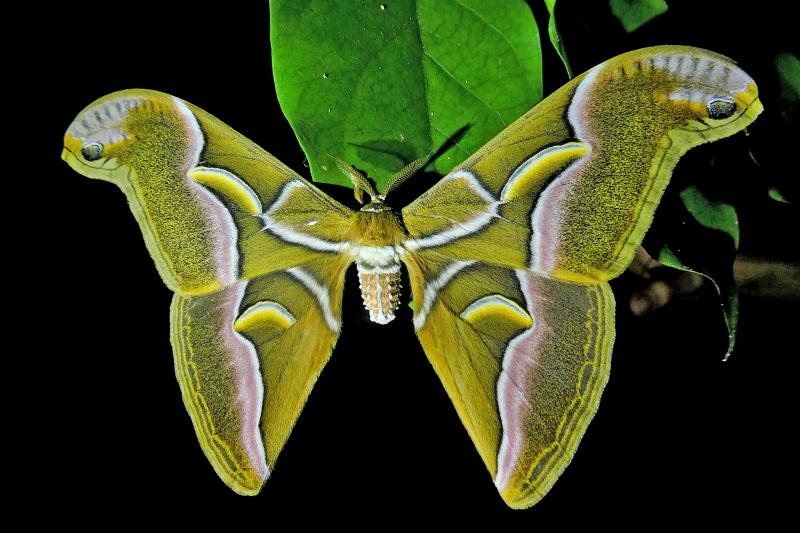
Photo: James Osborne
“Wow, check this out,” exclaims Janus, spotting some large and colorful caterpillars on a trail-side bush. These will soon turn into one of the world’s largest and charismatic moths; the lesser atlas moth.
THE GRASSLANDS
A vast expanse of darkness surrounds us as we cross the swing-bridge at Lengshuikeng (冷水坑). Soon we pass an ancient stone structure reclaimed by the forest; an old ruined cow shed. The grasslands must be near. A greater green snake watches us from its perch in a tree as Janus once again cries out in excitement.
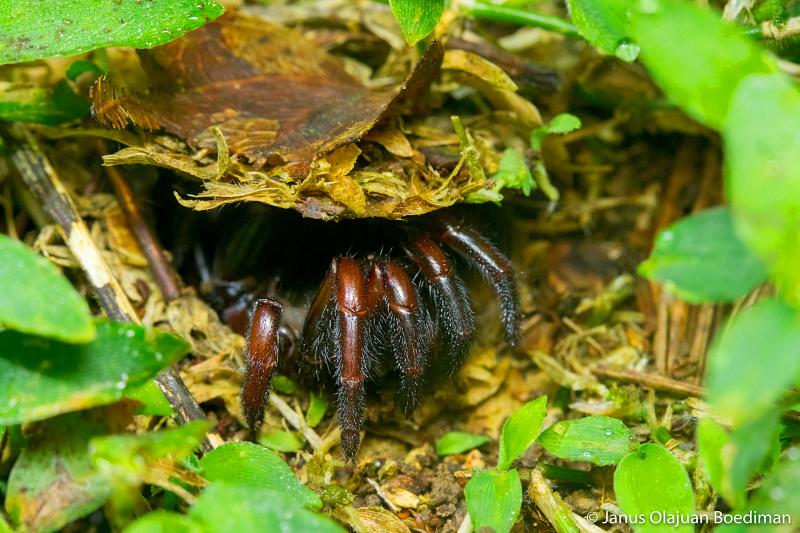
Photo courtesy of Janus Olajuan
In anticipation we crouch down beside him to try and see what it is. A large trapdoor spider pokes its head out from beneath its camouflaged trapdoor.
“They use a fine web tripwire to detect passing prey,” he says.
The grasslands feel like another world at night. Our lights reveal a snaking trail ahead, while all around seems like an infinite sea of darkness. The air is filled with the sounds of crickets and frogs.
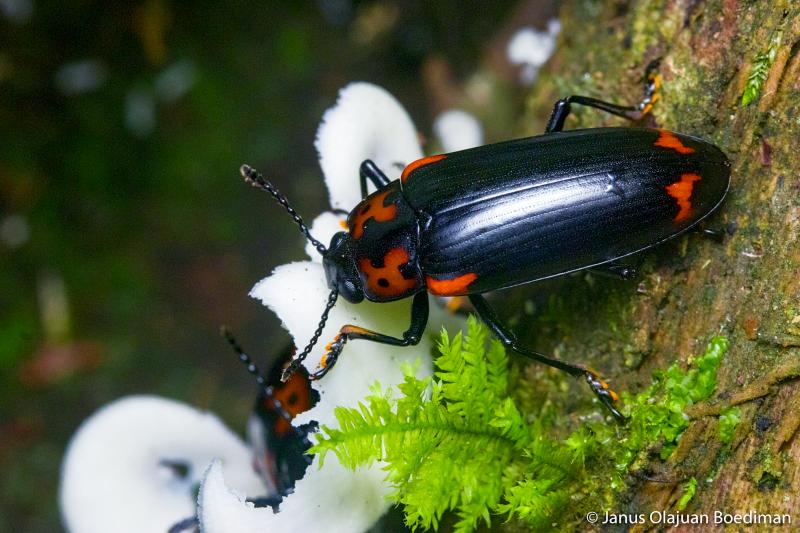
Photo courtesy of Janus Olajuan
Before long, patches of forest break up the stretches of open grass. After entering a stretch of forest we notice a glint of light in among the trees. “Wow,” exclaims Monica as our flashlights expose an enormous semi-wild buffalo standing between some trees.
We soon spot two more. The darkness and their proximity makes them seem gigantic. Their large horns and eyes still glowing in the reflected flashlights, makes them frightening to behold. After snapping a few shots, and admiring these incredible creatures, we decide it is safer to move on.
As the forest opens to grassland again, we see buffalo warning signs and safety barriers to escape a charging bull. Soon more glowing eyes reveal more water buffalo grazing in the open grass. Although used to passing hikers, they can be dangerous.
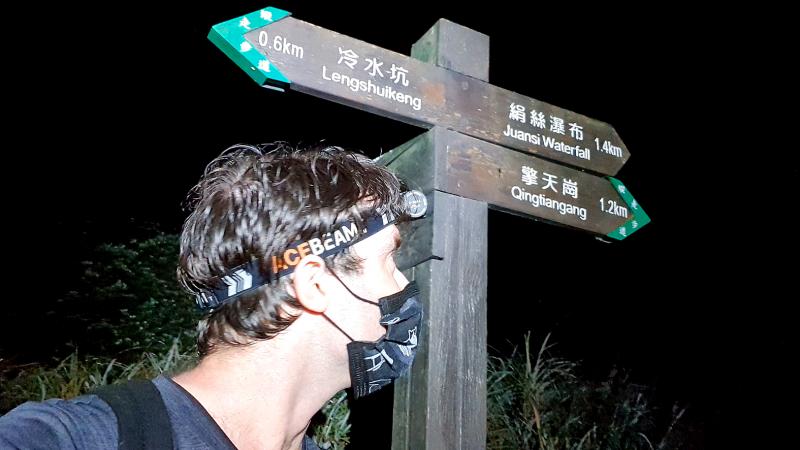
Photo: James Osborne
THE FINAL HAUL
Before we enter the forest for the final descent to Fengguizui, we pass five wild turtles. A green tree viper watches over a frog in another forest pool.
Soon our legs become weary and we try not to stumble on the slippery stone path as fatigue grips us. Once again our entomologist cries out in excitement. He has found some black and red beetles eating mushrooms on a log. They are interesting beetles, but it’s his enthusiasm that keeps us going.
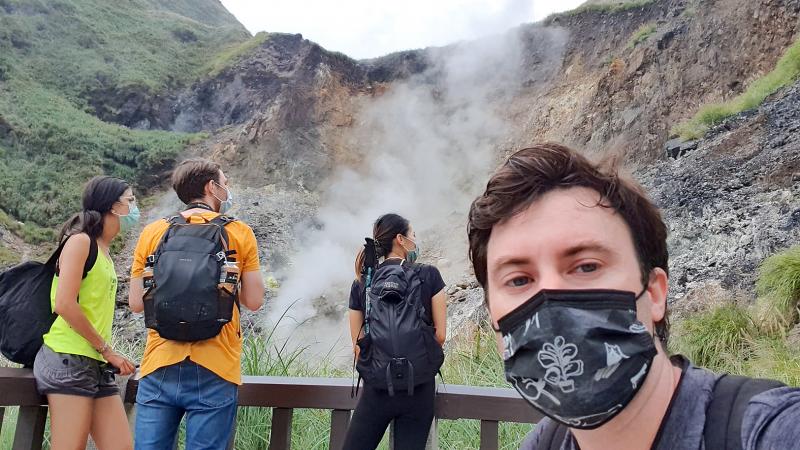
Photo: James Osborne
After a grueling nine and a half hours on the trail, a big Formosan toad sits beside the final marker to cheer our completion of stage three. With sore feet and wobbly knees, we clamber back onto our bikes. Satisfied, but with only our warm comfortable beds in mind, we head for home.
James Osborne has been living in Taiwan for about two years, where he has been pursuing a passionate hobby of discovering and filming Taiwan’s unique biodiversity. Check out his Youtube channel (James Osborne) for videos on his ecological adventures.
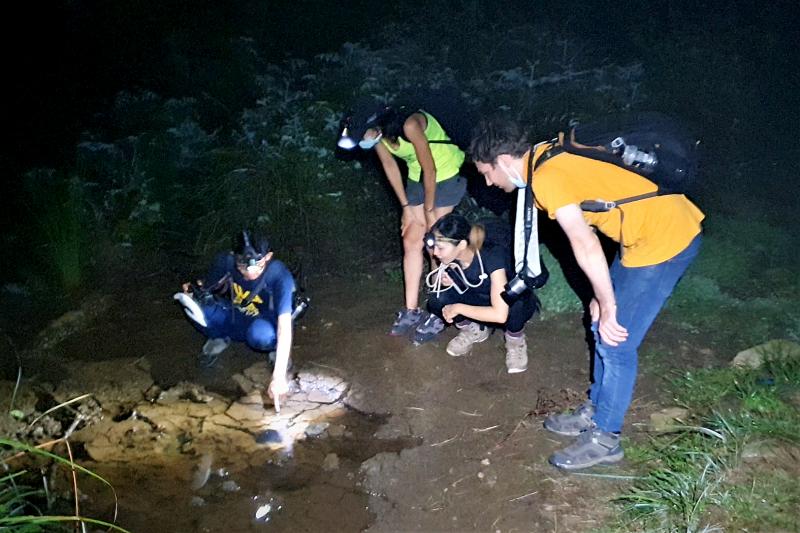
Photo: James Osborne

In the March 9 edition of the Taipei Times a piece by Ninon Godefroy ran with the headine “The quiet, gentle rhythm of Taiwan.” It started with the line “Taiwan is a small, humble place. There is no Eiffel Tower, no pyramids — no singular attraction that draws the world’s attention.” I laughed out loud at that. This was out of no disrespect for the author or the piece, which made some interesting analogies and good points about how both Din Tai Fung’s and Taiwan Semiconductor Manufacturing Co’s (TSMC, 台積電) meticulous attention to detail and quality are not quite up to

April 21 to April 27 Hsieh Er’s (謝娥) political fortunes were rising fast after she got out of jail and joined the Chinese Nationalist Party (KMT) in December 1945. Not only did she hold key positions in various committees, she was elected the only woman on the Taipei City Council and headed to Nanjing in 1946 as the sole Taiwanese female representative to the National Constituent Assembly. With the support of first lady Soong May-ling (宋美齡), she started the Taipei Women’s Association and Taiwan Provincial Women’s Association, where she

Chinese Nationalist Party (KMT) Chairman Eric Chu (朱立倫) hatched a bold plan to charge forward and seize the initiative when he held a protest in front of the Taipei City Prosecutors’ Office. Though risky, because illegal, its success would help tackle at least six problems facing both himself and the KMT. What he did not see coming was Taipei Mayor Chiang Wan-an (將萬安) tripping him up out of the gate. In spite of Chu being the most consequential and successful KMT chairman since the early 2010s — arguably saving the party from financial ruin and restoring its electoral viability —

It is one of the more remarkable facts of Taiwan history that it was never occupied or claimed by any of the numerous kingdoms of southern China — Han or otherwise — that lay just across the water from it. None of their brilliant ministers ever discovered that Taiwan was a “core interest” of the state whose annexation was “inevitable.” As Paul Kua notes in an excellent monograph laying out how the Portuguese gave Taiwan the name “Formosa,” the first Europeans to express an interest in occupying Taiwan were the Spanish. Tonio Andrade in his seminal work, How Taiwan Became Chinese,